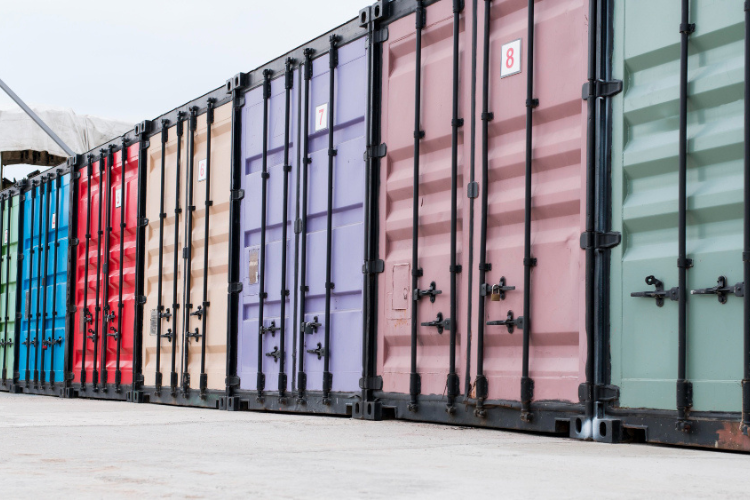Beyond the Box: What the Journey of a Shipping Container Tells Us About the Supply Chain

The journey of a shipping container is far more than a series of logistical handoffs — it’s a living chronicle of how the world supply chain catches its breath, readjusts, and reinvents itself. It is a story of operational precision, human collaboration, and strategic foresight.
From the moment raw materials are packaged on a factory floor to the moment finished goods turn up on store shelves (or at customers’ front doors), every step demonstrates how well — and wisely — a company’s supply chain management.
While the actual journey of a container can seem simple enough — from factory to port, over long ocean routes, and through complicated channels of distribution — what happens behind closed doors is a different story.
It’s governed by experts in dozens of disciplines who anticipate issues before they arise, who have lines of communication constantly open across time zones, and who get every cog within the logistics machine running in unison.
Each box’s journey is a reflection of the hidden choreography of global trade — where information, people, and processes dance together to ensure the flow of goods.
It’s Not About The Container. It’s About The People Behind It.
When we think of shipping containers, we tend to visualize the physical: massive steel boxes stacked high on ships, rows of cranes picking and dropping at ports, or trailers trucking them down highways.
Behind every single one of those containers, though, is a group of experts — each laboring to ensure that nothing gets left behind along the way.
From regulatory doc compliance analysts who manage regulatory documents to ocean freight planners who map out most efficient delivery routes, each expert helps maintain the beat of the world’s supply chain management.
Warehouse automation lead specialists provide accuracy in sorting and filling. Last-mile dispatchers ensure timely delivery, weighing efficiency against consumer delight.
This network’s success is not any one person’s or department’s — it’s because they’re able to work together. In a world where one misplaced step can send a ripple effect spanning continents, communication and collaboration are essential.
The specialists at each point not only understand their specific task but also how what they’re doing fits into upstream and downstream outcomes.
That is why talent strategy has become one of the greatest business differentiators in modern logistics. A company’s ability to hire, develop, and retain the right people is what makes a mundane supply chain into a source of competitiveness.
Building The Human Infrastructure Of The Supply Chain Management
Strong supply chains don’t rely on high-tech technology, predictive data analysis, or automated systems — they rely on people.
Behind each forecast produced by AI is a data analyst verifying inputs. Behind each transportation management system is a logistics coordinator solving real-life exceptions.
Leadership teams with this dynamic in mind create talent plans that align with their business goals. When hiring is haphazard or devoid of business intent, even the most advanced systems do not work.
But when hiring is intentional — with focus on both technical skills and thinking strategically — companies instill resilience into the business.
This is where talent alignment comes into play. Forward-thinking firms who analyze where skill gaps occur, and then supplement with experienced professionals who also have flexibility build foundations for long-term stability.
It might be applying new sustainability rules, changing warehouse operations into digitized settings, or reacting to geopolitical concerns. In every case, having the right people in the right slots determines whether projects take hold or languish.
The Talent Chain Is The Supply Chain
No more than a container can deliver without drayage, a supply chain cannot grow unless it has the talent behind it. Each process from procurement and manufacturing to fulfillment and delivery depends upon talent capable of translating strategy into action.
With increasingly integrated global logistics, the distinctions between operations, data, and customer experience are eroding.
A slowdown in one port might be insignificant in isolation, but its ripple impact can radiate across every level of the business — from cash flow planning to brand image. That is why adaptability and talent mobility are no longer nice-to-haves; they are necessities.
Those companies that thrive during periods of uncertainty are the ones that invest heavily in gaining cross-functional skills.
They create speed-driven leaders, tech-enabled operators, and data-driven analysts who can dig through piles of data to find valuable insights. That is, they do not treat their human capital as a cost center but as a strategic asset — the dynamic power train of the supply chain management.
The Human Element In An Automated World
Technology has transformed supply chains beyond their previous levels. Automation, IoT sensors, blockchain confirmation, and AI-based forecasting have made logistics faster and transparent. But it all depends on human oversight.
Computers can track movement but only human beings can use judgment when disruption strikes — whether it is a wayward weather pattern, a closure of a port, or a cyber attack. It’s where digital smarts meet human know-how that allows companies to stay nimble under duress.
In fact, the future of logistics is the future of those companies that can balance people and technology. That involves hiring not just for traditional roles, but for new hybrid skill sets — leaders with knowledge of supply chain fundamentals and digital tools.
Revolutionizing The Supply Chain As A Talent Ecosystem
To continue being competitive, companies must think beyond the traditional model of employing. The supply chain for today demands continuous learning, reskilling, and job mobility.
Having open avenues for progression enables firms to retain their top performers and accumulate institutional capital — an imperative driver when facing global shocks.
Visionary leaders are already investing in cross-training programs, mentorship groups, and digital literacy initiatives that set their teams up for tomorrow. They recognize that every human capital advancement trickles down to improved supply chain performance.
And as global commerce stays ahead of the curve, so must the mindset regarding workforce development. The most sustainable companies are those that treat talent as part of their supply chain systems — not an afterthought, but a core competency.
Beyond The Box Lies The Future
The next container shipment that crosses the ocean represents something greater than goods in transit — it represents coordination, perseverance, and human creativity. Every mile traveled represents decisions made by specialists that keep the world economy moving.
Talent investment is not just vacancy replacement. It’s about building a team that understands the journey — from factory floor to consumer hands — and is able to manage it with insight and precision. In today’s age of global supply chains, your supply chain management is your talent chain. Explore how each stage connects in the present by looking at the accompanying visual resource from CS Recruiting, a leading logistics and supply chain recruitment agency that helps companies create the workforce fueling global trade.










